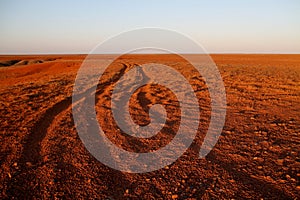- Stock Photography: THE BREAKAWAYS. GIBBER PLAINS AND MICA PITS OF SOUTH AUSTRALIA by Robynbrody
- Price: 1$
- Size Facebook: 1702 x 630 px
- Size Twitter: 1500 x 500 px
- Size LinkedIn: 1128 x 191 px
More Facebook, Twitter and LinkedIn Cover Photos
Cover photo info
- Photo title: The Breakaways. Gibber Plains and mica pits of South Australia
- Author: Robynbrody
- Cover photo description:
- The Breakaways, consisting of flat topped mesas, stony gibber desert and mica fields are geological remnants of millions of years. They are a striking & unique example of arid scenery. Looking out over the breakaways it is hard to believe that over 70 million years ago, a vast inland sea covered the area. The name 'gibber' comes from the Aboriginal word for stone. The gibber is what is left when the sand and dust are blown away by the desert winds. A stone shaped by windblown sand is called a ventifact. The word mica is derived from the Latin word mica, meaning a crumb, and probably influenced by micare, to glitter. The mica group of sheet silicate (phyllosilicate) minerals includes several closely related materials having nearly perfect basal cleavage. All are monoclinic, with a tendency towards pseudohexagonal crystals, and are similar in chemical composition. The nearly perfect cleavage, which is the most prominent characteristic of mica, is explained by the hexagonal sheet-like arrangement of its atoms. Muscovite, the principal mica used by the electrical industry, is used in capacitors that are ideal for high frequency and radio frequency. Phlogopite mica remains stable at higher temperatures (to 900 °C (1,650 °F)) and is used in applications in which a combination of high-heat stability and electrical properties is required. Muscovite and phlogopite are used in sheet and ground forms.
- Image ID:58460195
- Views:38
- Downloads:0
Keywords for Facebook, Twitter and LinkedIn timeline photos
breakaways
consisting
desert
fields
flat
geological
gibber
mesas
mica
millions
remnants
stony
striking
topped
years














